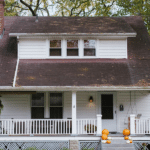Image commercially licensed from Unsplash
By: Robin Svec
Wildlife-Friendly Gardening
Creating a garden that attracts and supports local wildlife is a rewarding endeavor for any nature enthusiast. By carefully designing your outdoor space, you can provide a haven for various wildlife species, from birds and butterflies to small mammals and beneficial insects. This article will guide you through the steps to create your own wildlife oasis.
Understanding Local Wildlife Needs
Research Local Species
The first step in creating a wildlife-friendly garden is understanding the specific needs of local wildlife. This involves researching the types of wildlife in your area and their habitat requirements. Knowing what species are native to your region will help you make informed choices about the plants and features to include in your garden.
Providing Essential Elements
All wildlife needs food, water, shelter, and space to thrive. A well-designed garden should include a variety of plants that offer nectar, pollen, berries, and seeds throughout the year. Water sources such as birdbaths or small ponds are crucial for attracting birds, amphibians, and insects. Dense shrubbery, nesting boxes, and undisturbed areas can provide shelter and breeding sites.
Choosing the Right Plants
Native Plants
Incorporating native plants is key to attracting local wildlife. These plants have evolved alongside local wildlife and are well-suited to meet their needs. As Robin Svec, an advocate for nature conservation, points out, native plants offer the most nutritional benefits to local wildlife and are adapted to the local climate and soil conditions.
Plant Diversity
A diverse selection of plants will attract a wider variety of wildlife. Include a mix of trees, shrubs, grasses, and flowering plants to cater to different species. Pay attention to blooming periods to ensure a continuous food supply throughout the seasons.
Water Features for Wildlife
Importance of Water
Water is a vital component of a wildlife-friendly garden. It not only provides drinking water but also serves as a habitat for aquatic creatures and insects. Even a small water feature, such as a birdbath or a shallow pond, can significantly impact wildlife diversity in your garden.
Safe and Accessible Water Sources
Ensure that water sources are safe and accessible for wildlife. Shallow edges allow small animals and insects to drink without the risk of drowning. Adding rocks and logs in and around the water can provide additional habitat features.
Creating Shelter and Nesting Sites
Natural Shelters
Creating natural shelters is crucial for protecting wildlife. Dense bushes, log piles, and leaf litter offer hiding spots and nesting materials. Leaving a part of your garden a little wild can provide essential shelter for many species.
Artificial Nesting Sites
In addition to natural shelters, consider installing birdhouses, bat boxes, and insect hotels. Robin Svec emphasizes the importance of positioning these shelters correctly to ensure they are safe and appealing to the intended wildlife.
Sustainable Gardening Practices
Chemical-Free Approach
Avoiding the use of chemicals is crucial in a wildlife-friendly garden. Pesticides, herbicides, and synthetic fertilizers can harm the very creatures you are trying to attract and support. Opt for organic gardening practices to ensure a safe environment for wildlife.
Composting and Mulching
Composting and mulching are excellent sustainable gardening practices. They enrich the soil, reduce waste, and provide a habitat for beneficial insects and microorganisms.
Engaging the Community
Sharing Knowledge
Engaging with your community can enhance your wildlife gardening efforts. Share your experiences and knowledge with neighbors and local gardening groups. Robin Svec points out that community involvement can lead to broader conservation efforts and increased biodiversity in the area.
Participating in Citizen Science
Participating in citizen science projects can be a rewarding way to contribute to wildlife conservation. Observing and recording the wildlife in your garden can provide valuable data for conservationists and help track the health of local ecosystems.
The Joy of Wildlife Gardening
Personal Benefits
Creating a wildlife oasis in your garden is not only beneficial for the environment but also for personal well-being. It provides a unique opportunity to connect with nature, observe wildlife up close, and experience the changing seasons in a meaningful way.
Educational Opportunities
A wildlife-friendly garden is a fantastic educational resource for children and adults alike. It offers hands-on learning opportunities about nature, ecology, and the importance of biodiversity.
Conclusion
Designing a garden that supports and attracts local wildlife is a fulfilling journey that brings life and beauty to your outdoor space. By following the principles of wildlife-friendly gardening, you can create a vibrant ecosystem right in your backyard. Whether you are a seasoned gardener like Robin Svec or just starting out, your efforts will make a significant contribution to local wildlife conservation and the overall health of our planet.









